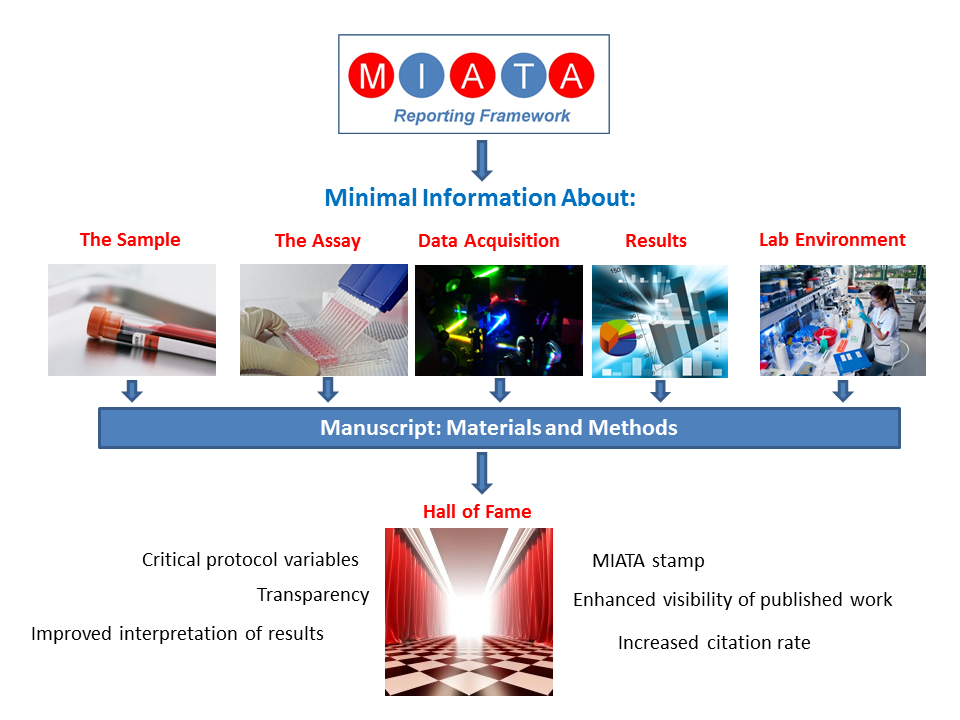Analysis of antigen-specific T cell responses has become a widely used tool in immune monitoring. Although an increasing number of promising data from correlative studies has been published and the variables of assay conduct which affect the quality of results have been diligently defined, a lack of conformity in reporting results from T cell assays exists which hampers the ability to objectively evaluate data.
Here we present a reporting framework that enables an objective and thorough interpretation of published results from T cell assays: “
MIATA” (
Minimal
Information
About
T cell
Assays).
MIATA summarizes in 5 modules the essential information to be included in the Materials and Methods section of publications to provide the transparency sought by peers and reviewers, as defined in a 3 year public consultation process.
This website provides the information about how to easily
implement MIATA, including I. the
MIATA guidelines, II. a
checklist that can be executed online, III.
example reports, IV. Pre-established
editable Materials and Method documents with fill-in options to assist in MIATA-compliant reporting, and V. tools assisting with
donor information and
term definition.
MIATA-compliant papers are listed in the MIATA “
Hall of Fame” with links to the original article, providing enhanced visibility of the published work.
